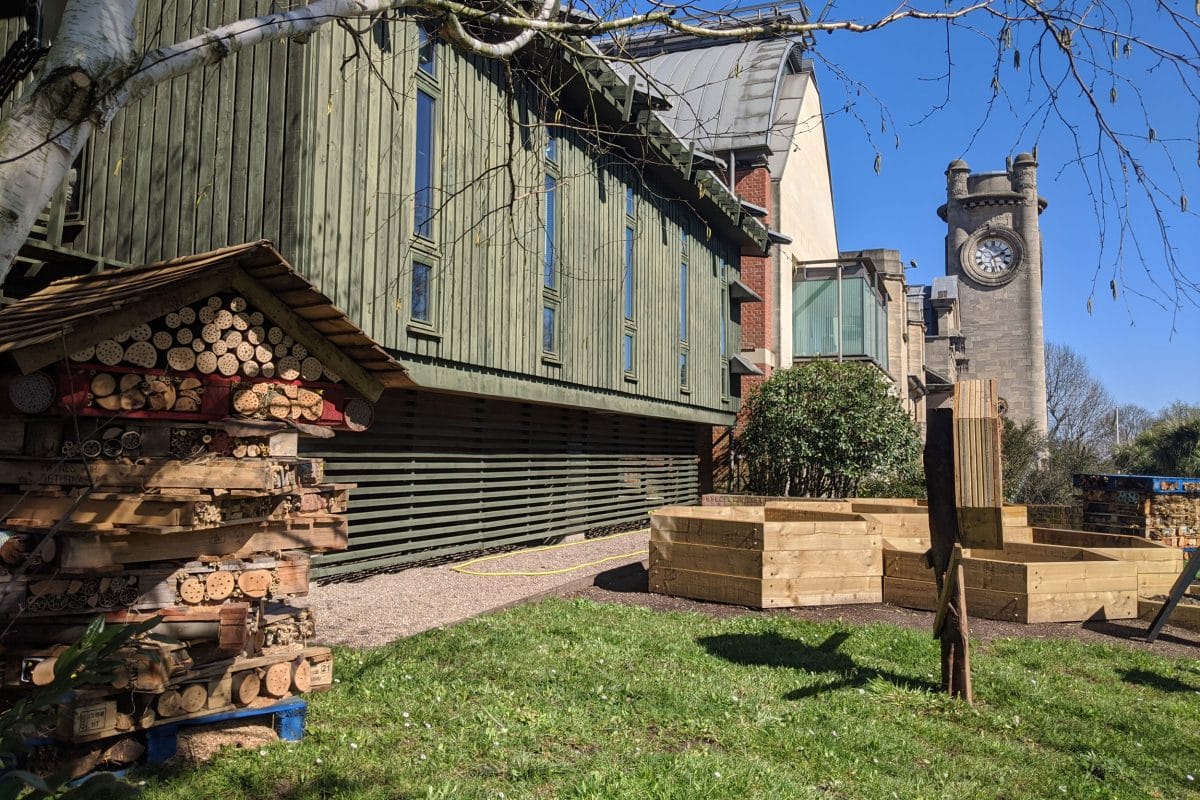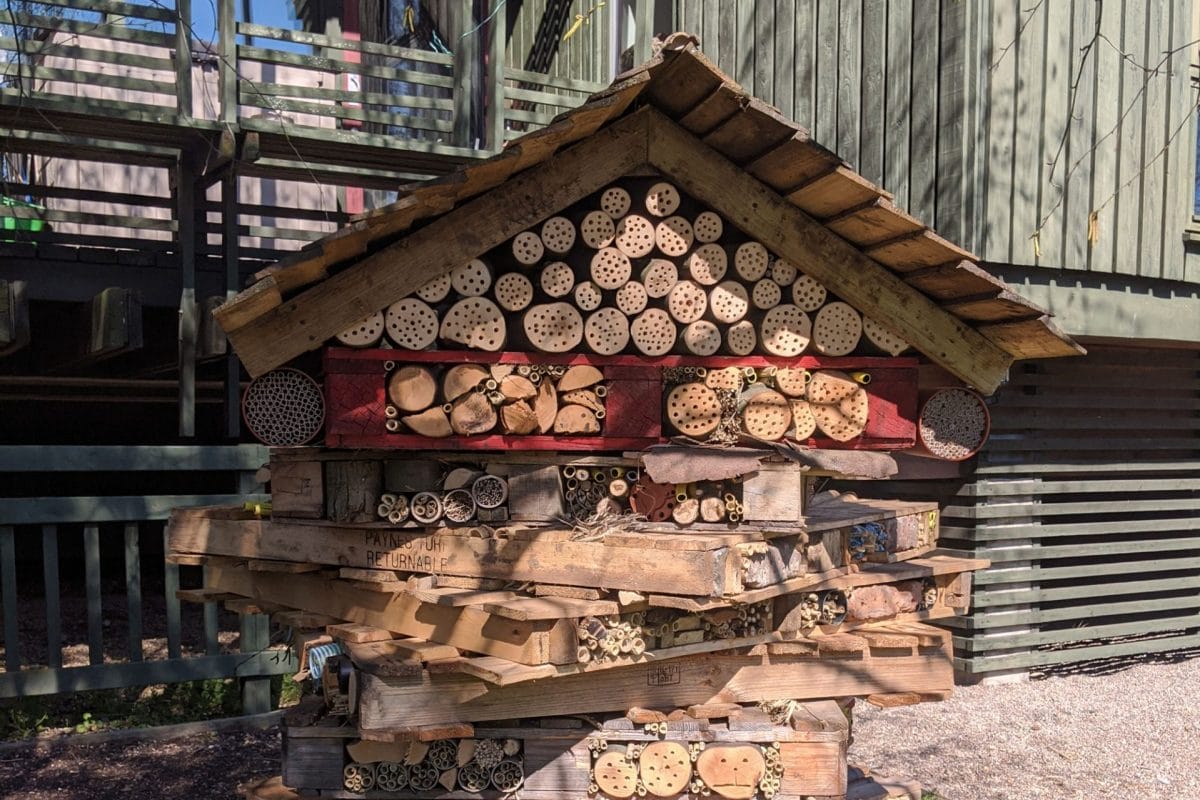The Bee Garden is designed around a central group of six hexagonal raised beds planted with species that attract and provide food for bees – including annuals such as Sunflowers Helianthus annuus, perennials including Vipers Bugloss Echium vulgare and shrubs like Mahonia × media Winter Sun.
To either side is an area of wildflower turf for maximum plant diversity, with a bee hotel in each – made from reclaimed pallets – to provide shelter and nesting sites for solitary bees.
And seeming to rise out of the foliage is Flower Girl, a new sculpture by Jasmine Pradissitto (on display until June 2022), which is made from a material that absorbs NO2 or nitrogen dioxide pollution from the air.
NO2 has been found to mask the smell of flowers and prevent bees from finding food.



The work – with the full title, Flower Girl – For it was only upon the gentle buzzing of bees that she could awaken – takes the form of a sleeping female face, surrounded by giant swirling leaves as she waits to be woken by returning bees.
The sculpture is formed from NoxTek™, a geopolymer which, over time, can absorb up to 15% of its own weight in nitrogen dioxide molecules.
Rain falling onto the sculpture will wash away the absorbed gas as a harmless liquid, allowing more pollution to be absorbed from the surrounding air.
The hope is that Flower Girl will clear a ‘scent path’ for bees living in the bee hotels and in the surrounding area, making it easier for them to find the food sources provided in the Bee Garden.
This area has been given over to wildflowers in recent years but we’ve decided to step it up and create a garden dedicated to supporting bees.
They’re our most important pollinators, vital to gardeners and to the environment as whole, so it makes sense to design with them in mind. And we’re thrilled to have Jasmine’s sculpture adding both beauty and environmental benefit to the Bee Garden.
Work to create the Bee Garden and install Flower Girl has been carried out during lockdown, while the Gardens have remained open with social distancing measures in place to allow local people to visit during their daily exercise.
The Bee Garden is expected to be in full bloom in late June and July. And you can catch up with how the Bee Garden has grown over the past few months by watching the Horniman’s time-lapse film.
You can follow Jasmine and find more of her work on Instagram @jasmine_pradissitto.


